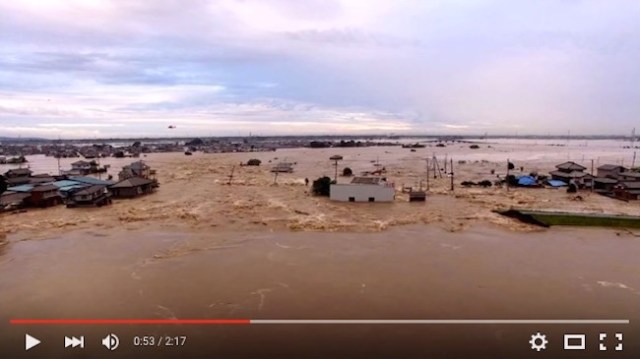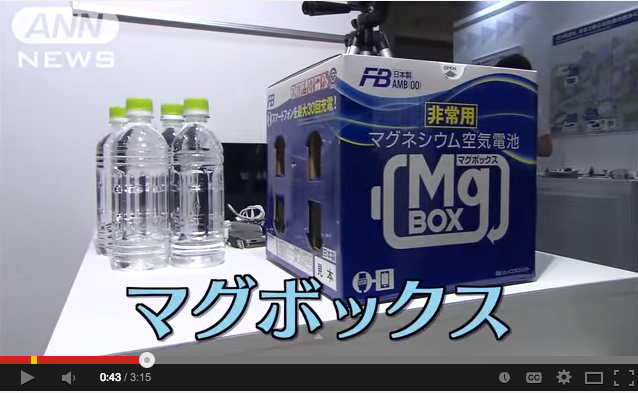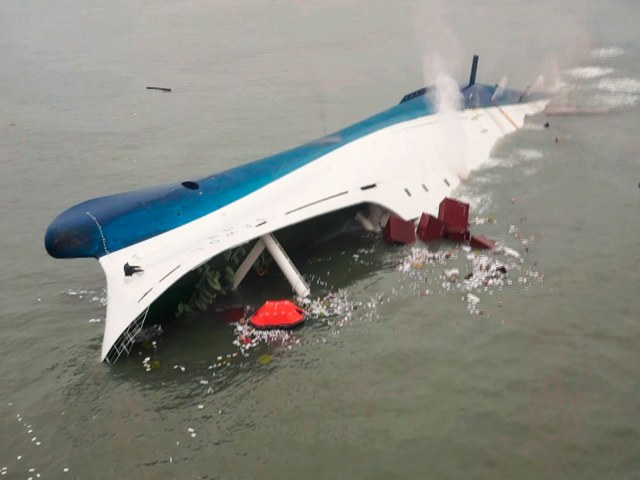Magnetic notices convey a very important message about your cats for when you’re not there to speak for them.
disaster (Page 2)
Messagess of support, this time from Taiwan, keep pouring in following the deadly earthquake in Kumamoto.
With the ability to withstand the weight of up to 20 people, this bed doesn’t mess around!
Plans to use traditional Japanese kintsugi techniques to make them look as good as new, or perhaps even better.
Mobile kitchens provide comfort food, in the truest sense of the word, for thousands of earthquake victims.
Passersby witness frightening scene as it happens.
You might have heard that we experienced a magnitude-5.6 earthquake last week, which got everyone in the area a little shaken up (except for this super chill gorilla, of course). While Japan experiences earthquakes incredibly frequently, this one was a little bigger than usual, and had many in Japan diving for cover.
Oh, no, wait, they dived for their smartphones instead…
In the wake of the massive earthquake that struck central Nepal last week, non-profit organisation Peace Winds Japan sent a small team of six rescuers and two specially trained dogs to help with the search for survivors.
Remarkably, one of the search dogs who was dispatched to Kathmandu is himself a former rescue: Yumenosuke, a stray dog saved from euthanasia in Hiroshima.
Four years on, the earthquake, tsunami, and nuclear crisis that befell Japan’s Tohoku region on March 11, 2011 have very little effect on the day-to-day lives of most people in the country. The rolling blackouts have stopped. Batteries and bottled water are once again readily available. Trains are running, and whole cities aren’t spending hours walking home from work or school.
But while a return to normalcy is a desirable, and ultimately necessary, part of recovery, it’s also important to remember what happened. To stem the forgetfulness that often accompanies the later stages of coping with tragedy, on March 11 Yahoo! Japan will be making a donation to the Tohoku recovery efforts for every person that searches for “3.11” through the company’s search engine.
The Japanese Ministry of Defense’s Technical Research & Development Institute (TRDI) appears to be nearing completion of the Throwable Type Reconnaissance Robot. It’s a little black orb about 50 percent bigger than a softball that Self-Defense Force members can simply toss into environments otherwise hazardous to humans and have a look around before taking action. It looks kind of awesome.
This coming spring will mark four years since the devastating earthquake and tsunami that struck Japan on March 11, 2011. While that’s not nearly long enough for the those who experienced the tragedy first-hand to forget about the destruction, sadness, and fear, some politicians are concerned that in time memories will fade, which is why a bill is being introduced in the Japanese Diet to establish March 11 as an official day of remembrance of the disaster.
Sitting on several fault lines, Japan is no stranger to natural disasters and the havoc that ensues afterward. While these tragedies can’t be prevented, their effects can be lessened by making a disaster preparedness kit to handle several days without power or access to food and water.
A key item in these kits is usually batteries, and a Japanese company’s recent announcement about a new kind of battery is expected to completely change the way we prepare for disasters. Only needing to be filled with water, the “Mg Box” battery can be used to charge smartphones, and the invention has made the Japanese company’s stock skyrocket as investors rush to back the game-changing technology.
After a tragedy like the April 16 sinking of the South Korean ferry Sewol, many are left wondering how to appropriately commemorate the lives lost without forgetting the awful truth of the actual incident. Last week a South Korean newspaper revealed that a two-hour documentary about the accident is being planned to be released next year to coincide with the one-year anniversary. The film’s backers are relying solely on donations and are seeking just 400 million won (US$392,000) to finance the low-budget project. And with the entire country paying extremely close attention to every tragic detail to come out of the investigations surrounding the accident, this film is destined to be an instant hit in Korean movie theaters.
Further controversy has emerged surrounding the South Korean Sewol ferry disaster, as a TV crew is accused of setting up footage of a rescue diver. Korean media reports that a member of the rescue team who was not working at the time was put in a wetsuit and drenched in water to give the appearance that he had just come back from a dive. Media crews apparently said that a dry-haired diver would not be realistic and believable enough.
No sooner was it announced the third most at-risk area for natural disasters in the world than the Pearl River Delta in China was hit by extremely severe rain storms with giant hail and damaging winds. The region, which is composed of several major urban centers has experienced flooded subways stations, canceled flights, and destroyed shopping centers due to heavy downpours.
Some of these scenes have been recorded and shared online in video form.
‘I wonder if you’ll have a grandchild when you get this letter?’ These are the words written by a woman 10 years ago, before she lost her life in the March 2011 tsunami. Her mother and father were shocked to find the letter containing them arrive in the mail this January. While there was no Hollywood movie ending where their beloved daughter turned up alive and well, the letter has at least given them a chance to hear some of the things she never had the chance to tell them in life.
It’s been three years since the March 2011 Tohoku earthquake and tsunami disaster swallowed up whole cities and caused one of the worst nuclear power disasters in history. For much of the world the devastating event is a distant memory – except for people in California who, for some reason, to this day think swimming in the ocean is going to give them three eyes or four boobs or something.
But for many living near the crippled Dai-Ichi Nuclear Power Plant, like the inmates at a Kagoshima City prison located within the nuclear evacuation zone, the Tohoku earthquake and the persistent effects of the subsequent nuclear disaster altered their lives forever; so says a former inmate who is formally suing TEPCO for emotional distress.
Super Typhoon Haiyan left a trail of destruction as it made its way across the island nation of the Philippines on November 13, 2013. In the wake of the disaster, one of our reporters traveled to the Philippine island of Leyte to talk to the victims of this massive storm and give a firsthand description of the damage. Please enjoy his humble account of the situation in Ormoc City, Philippines.
















 7 great places to see Mt. Fuji from without having to climb it
7 great places to see Mt. Fuji from without having to climb it 7-Eleven Japan’s ramen-cooking robot whipped us up a bowl of noodles【Taste test】
7-Eleven Japan’s ramen-cooking robot whipped us up a bowl of noodles【Taste test】 Starbucks Japan ready to get Year of the Horse started with adorable drinkware and plushies【Pics】
Starbucks Japan ready to get Year of the Horse started with adorable drinkware and plushies【Pics】 Survey finds more than 70 percent of Japanese children have an online friend
Survey finds more than 70 percent of Japanese children have an online friend Is it rude to sing along at concerts in Japan? We ask a pro musician for his take
Is it rude to sing along at concerts in Japan? We ask a pro musician for his take Beautiful Studio Ghibli photo frames let you put yourself in the worlds of Totoro and Kiki【Pics】
Beautiful Studio Ghibli photo frames let you put yourself in the worlds of Totoro and Kiki【Pics】 This is possibly the coziest train in all Japan thanks to onboard hot spring footbaths【Pics】
This is possibly the coziest train in all Japan thanks to onboard hot spring footbaths【Pics】 Start saving room now – Japanese grocery store’s biggest sushi roll yet is coming for Setsubun
Start saving room now – Japanese grocery store’s biggest sushi roll yet is coming for Setsubun Star Wars becomes a kabuki play as we attend Kairennosuke and the Three Shining Swords in Tokyo
Star Wars becomes a kabuki play as we attend Kairennosuke and the Three Shining Swords in Tokyo Disillusionment at Tsukiji’s tourist-target prices led us to a great ramen restaurant in Tokyo
Disillusionment at Tsukiji’s tourist-target prices led us to a great ramen restaurant in Tokyo Japan may add Japanese language proficiency, lifestyle classes to permanent foreign resident requirements
Japan may add Japanese language proficiency, lifestyle classes to permanent foreign resident requirements Lacquerware supplier to emperor of Japan and Pokémon team up for new tableware
Lacquerware supplier to emperor of Japan and Pokémon team up for new tableware Starbucks Japan releases new zodiac chilled cup drink for 2026
Starbucks Japan releases new zodiac chilled cup drink for 2026 Japan’s otoshidama tradition of giving kids money at New Year’s gets a social welfare upgrade
Japan’s otoshidama tradition of giving kids money at New Year’s gets a social welfare upgrade Cyberpunk anime meets traditional culture in Ghost in the Shell gold leaf Japanese changing screens
Cyberpunk anime meets traditional culture in Ghost in the Shell gold leaf Japanese changing screens Hello Kitty Choco Egg figures are an adorable trip through three periods of Japanese pop culture【Pics】
Hello Kitty Choco Egg figures are an adorable trip through three periods of Japanese pop culture【Pics】 7-Eleven Japan starts new temporary luggage storage service in over 300 branches
7-Eleven Japan starts new temporary luggage storage service in over 300 branches Can a dirty butthole make you filthy rich in Japan? We’re starting a New Year’s lottery experiment
Can a dirty butthole make you filthy rich in Japan? We’re starting a New Year’s lottery experiment Japan’s human washing machines will go on sale to general public, demos to be held in Tokyo
Japan’s human washing machines will go on sale to general public, demos to be held in Tokyo Starbucks teams up with 166-year-old Kyoto doll maker for Year of the Horse decorations【Photos】
Starbucks teams up with 166-year-old Kyoto doll maker for Year of the Horse decorations【Photos】 Tokyo considering law requiring more trash cans following litter increase in heavily touristed area
Tokyo considering law requiring more trash cans following litter increase in heavily touristed area Tokyo’s Tsukiji sushi neighborhood asks tour groups to stay away for the rest of the month
Tokyo’s Tsukiji sushi neighborhood asks tour groups to stay away for the rest of the month Nintendo’s Kirby now delivering orders at Kura Sushi restaurants, but not in Japan
Nintendo’s Kirby now delivering orders at Kura Sushi restaurants, but not in Japan Tokyo event lets you travel back in time, for free, to celebrate 100 years since Showa era start
Tokyo event lets you travel back in time, for free, to celebrate 100 years since Showa era start Sanrio theme park in Japan announces plans to expand into a Sanrio resort
Sanrio theme park in Japan announces plans to expand into a Sanrio resort Stamina-destroying “Paralysis Noodles” are Tokyo’s newest over-the-top ramen innovation
Stamina-destroying “Paralysis Noodles” are Tokyo’s newest over-the-top ramen innovation Survey asks foreign tourists what bothered them in Japan, more than half gave same answer
Survey asks foreign tourists what bothered them in Japan, more than half gave same answer Japan’s deadliest food claims more victims, but why do people keep eating it for New Year’s?
Japan’s deadliest food claims more victims, but why do people keep eating it for New Year’s? We deeply regret going into this tunnel on our walk in the mountains of Japan
We deeply regret going into this tunnel on our walk in the mountains of Japan Studio Ghibli releases Kodama forest spirits from Princess Mononoke to light up your home
Studio Ghibli releases Kodama forest spirits from Princess Mononoke to light up your home Major Japanese hotel chain says reservations via overseas booking sites may not be valid
Major Japanese hotel chain says reservations via overseas booking sites may not be valid Put sesame oil in your coffee? Japanese maker says it’s the best way to start your day【Taste test】
Put sesame oil in your coffee? Japanese maker says it’s the best way to start your day【Taste test】 The top 10 annoying foreign tourist behaviors on trains, as chosen by Japanese people【Survey】
The top 10 annoying foreign tourist behaviors on trains, as chosen by Japanese people【Survey】 No more using real katana for tourism activities, Japan’s National Police Agency says
No more using real katana for tourism activities, Japan’s National Police Agency says Starbucks Japan reveals new sakura drinkware collection, inspired by evening cherry blossoms
Starbucks Japan reveals new sakura drinkware collection, inspired by evening cherry blossoms Beautiful Studio Ghibli photo frames let you put yourself in the worlds of Totoro and Kiki【Pics】
Beautiful Studio Ghibli photo frames let you put yourself in the worlds of Totoro and Kiki【Pics】 This is possibly the coziest train in all Japan thanks to onboard hot spring footbaths【Pics】
This is possibly the coziest train in all Japan thanks to onboard hot spring footbaths【Pics】 Start saving room now – Japanese grocery store’s biggest sushi roll yet is coming for Setsubun
Start saving room now – Japanese grocery store’s biggest sushi roll yet is coming for Setsubun Star Wars becomes a kabuki play as we attend Kairennosuke and the Three Shining Swords in Tokyo
Star Wars becomes a kabuki play as we attend Kairennosuke and the Three Shining Swords in Tokyo We try the new full-sized matcha Oreo cookies from Japan
We try the new full-sized matcha Oreo cookies from Japan Disillusionment at Tsukiji’s tourist-target prices led us to a great ramen restaurant in Tokyo
Disillusionment at Tsukiji’s tourist-target prices led us to a great ramen restaurant in Tokyo Sumo Sanrio! Hello Kitty and pals team up with Japan Sumo Association for new merch【Pics】
Sumo Sanrio! Hello Kitty and pals team up with Japan Sumo Association for new merch【Pics】 More Shinkansen trains being added to Japan’s “golden route” to meet traveler demand
More Shinkansen trains being added to Japan’s “golden route” to meet traveler demand Studio Ghibli releases new anime calendars for 2026 with heartwarming fan service
Studio Ghibli releases new anime calendars for 2026 with heartwarming fan service